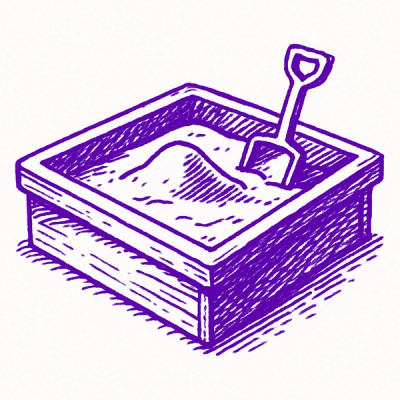
Research
/Security News
Critical Vulnerability in NestJS Devtools: Localhost RCE via Sandbox Escape
A flawed sandbox in @nestjs/devtools-integration lets attackers run code on your machine via CSRF, leading to full Remote Code Execution (RCE).
Brep-part-finder is able to search within a Brep file for parts that match user specified properties such as volume, center of mass and bounding box. The matching ID number of the part will be returned if found.
This is useful because the order or parts changes when exporting to Brep files. This part finder package helps keep track of meta data within a workflow. The neutronics workflow makes use of this package to help correctly identify materials when making DAGMC h5m files from Paramak geometries for neutronics simulations.
The installation instructions below create a new conda enviroment and install
conda create --name bpf_env
conda activate bpf_env
conda install -c cadquery -c fusion-energy -c conda-forge brep_part_finder
The installation instructions below create a new conda enviroment, install CadQuery and install this package. The master branch of CadQuery is currently required as latest features are required. When CadQuery version 2.2 is released then install can target a stable version.
conda create --name bpf_env
conda activate bpf_env
conda install -c cadquery -c conda-forge cadquery=master
pip install brep_part_finder
To view the properties of the parts in the Brep file the first stage is to import the package and make use of the get_brep_part_properties function.
import brep_part_finder as bpf
my_brep_part_properties = bpf.get_brep_part_properties('my_brep_file.brep')
print(my_brep_part_properties)
>>>{
1: {
'Center.x': 0, 'Center.y': 0, 'Center.z': 0,
'Volume': 10,
'BoundingBox.xmin': -20, 'BoundingBox.ymin': -20, 'BoundingBox.zmin': -20,
'BoundingBox.xmax': 20, 'BoundingBox.ymax': 20, 'BoundingBox.zmax': 20
},
2: {
'Center.x': 5, 'Center.y': 6, 'Center.z': 7,
'Volume': 10,
'BoundingBox.xmin': -40.0, 'BoundingBox.ymin': -40.0, 'BoundingBox.zmin': -40.0,
'BoundingBox.xmax': 40.0, 'BoundingBox.ymax': 40.0, 'BoundingBox.zmax': 40.0
},
3: {
'Center.x': 0, 'Center.y': 0, 'Center.z': 0,
'Volume': 10,
'BoundingBox.xmin': -10, 'BoundingBox.ymin': -10, 'BoundingBox.zmin': -10,
'BoundingBox.xmax': 10, 'BoundingBox.ymax': 10, 'BoundingBox.zmax': 10
}
}
From the above dictionary it is possible to identify parts from their central of mass (x,y,z coordinate), volume and bounding box. This can be done manually or one can pass the required properties into the find_part_id or find_part_ids functions to identify the part numbers of solids automatically.
A minimal example that finds the part id numbers with matching volumes
import brep_part_finder as bpf
my_brep_part_properties = bpf.get_brep_part_properties('my_brep_file.brep')
part_id = bpf.find_part_id(
brep_part_properties=my_brep_part_properties,
volume=10,
)
print(part_id)
>> [1, 3, 4]
The above example found 3 part ids with matching volumes.
The follow example also specifies the center of mass which helps narrow down the part ids to just to matching parts.
import brep_part_finder as bpf
my_brep_part_properties = bpf.get_brep_part_properties('my_brep_file.brep')
part_id = bpf.find_part_id(
brep_part_properties=my_brep_part_properties,
volume=10,
center_of_mass=(0,0,0),
)
print(part_id)
>> [1, 3]
In the this example the bounding box of the part has also been specified and these three pieces of information are enough to find one part that matches all three criteria.
import brep_part_finder as bpf
my_brep_part_properties = bpf.get_brep_part_properties('my_brep_file.brep')
part_id = bpf.find_part_id(
brep_part_properties=my_brep_part_properties,
volume=10,
center_of_mass=(0,0,0),
bounding_box = [[10,10,10], [-10,-10,10]]
)
print(part_id)
>> [3]
For more usage examples see the examples folder in this repository
When reactor models made with Paramak are exported to Brep files it is likely that the order of parts in the Brep file does not match the order of parts within the Paramak object. Therefore this program is useful when identifying parts in the Brep file. See the paramak_example file in the examples folder of this repository.
FAQs
A Python package to identify the part ID number in Brep format CAD files
We found that brep-part-finder demonstrated a healthy version release cadence and project activity because the last version was released less than a year ago. It has 2 open source maintainers collaborating on the project.
Did you know?

Socket for GitHub automatically highlights issues in each pull request and monitors the health of all your open source dependencies. Discover the contents of your packages and block harmful activity before you install or update your dependencies.

Research
/Security News
A flawed sandbox in @nestjs/devtools-integration lets attackers run code on your machine via CSRF, leading to full Remote Code Execution (RCE).

Product
Customize license detection with Socket’s new license overlays: gain control, reduce noise, and handle edge cases with precision.

Product
Socket now supports Rust and Cargo, offering package search for all users and experimental SBOM generation for enterprise projects.